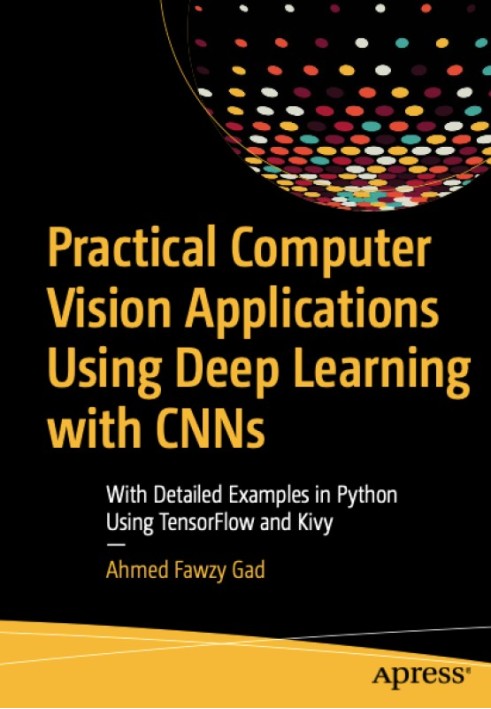Practical Computer Vision Applications Using Deep Learning with CNNs
 Instant download
Instant download
after payment (24/7)
 Wide range of formats
Wide range of formats
(for all gadgets)
 Full book
Full book
(including for Apple and Android)
Artificial intelligence (AI for short) is the field of embedding human thinking into computers In other words, creating an artificial brain that mimics the functions of the biological brain. Whatever the human can do intelligently is now required to be moved into machines. First-generation AI focuses on problems that can be formally described by humans. Using AI, steps for doing something intelligent are described in a form of instructions that machines follow. Machines follow the human without changes. These features are characteristic of the first era of AI.Humans can fully describe only simple problems such as Tic-Tac-Toe or even chess and fail to describe the more complicated problems. In chess, the problem can be simply explained by representing the board as a matrix of size 8×8, describing each piece and how it moves, and describing the goals. Machines will be restricted to those tasks formally described by humans. By programming such instructions, machines can play chess intelligently. Machine intelligence is now artificial. The machine itself is not intelligent, but humans have transferred their intelligence to the machine in the form of several static lines of code. By static, it is meant that the behavior is the same in all cases.The machine, in this case, is tied to the human and can’t work on its own. This is like a master-slave relationship. The human is the master and the machine is the slave, which just follows the human’s orders and no more.Embedding intelligent behavior inside chunks of code can’t handle all intelligent behaviors of humans. Some simple tasks, such as sorting numbers or playing some games, can be described by humans and then handled by the machine with 100% of human intelligence. However, some complex tasks, such as speech-to-text, image recognition, sentiment analysis, and others, can’t be solved by just code. Such problems could not be described by the human as done with chess. It is impossible to write code to recognize image objects such as cats. Such intelligent behavior of recognizing objects simply can’t be solved using a static code because there is no single rule for classifying objects. There is no rule to recognize cats, for instance. Even if a rule is successfully created to recognize cats in one environment, it will definitely fail when applied in another. So how can we make machines intelligent in such tasks? This is machine learning (ML), in which rules are learned by machines.
Data sheet
- Language
- English












